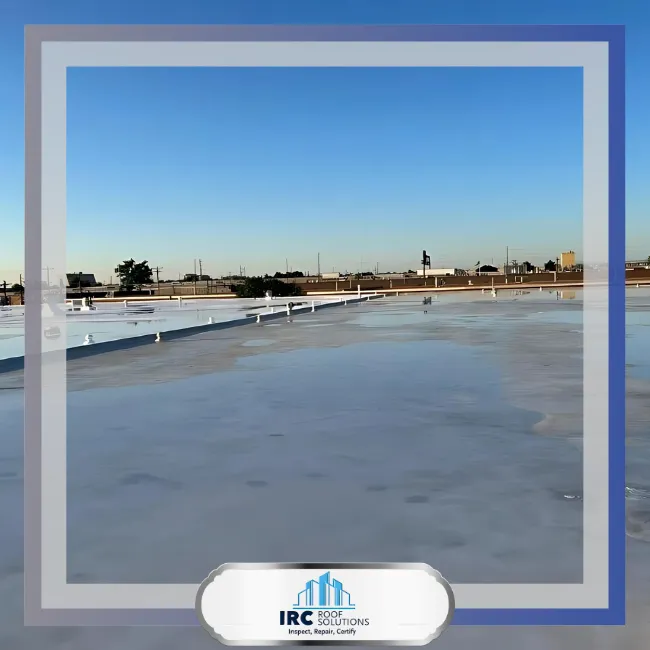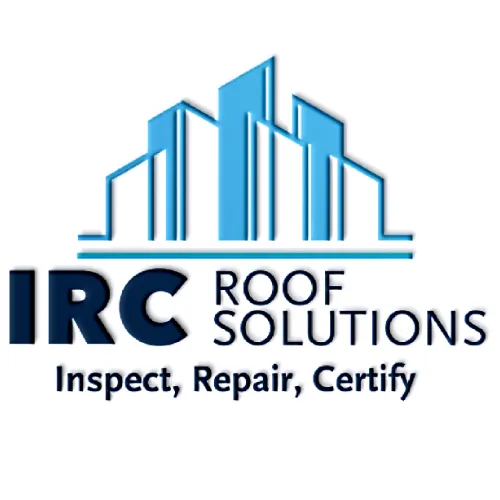Sponsored





Metal Roofing in Pacoima, CA
Strong, Stylish, And Built To Last
Upgrade your property with durable, low-maintenance metal roofing installed by Pacoima’s trusted professionals. Known for its long lifespan, weather resistance, and modern appearance, metal roofing offers lasting value for both homes and businesses. Browse our directory to connect with top-rated metal roofing contractors in Pacoima and start your project today.
Metal Roofing - Pacoima - Why Hire a Professional Metal Roofing Services
Durable, Energy-Efficient, and Long-Lasting Roofing Solutions by Experts
The Growing Popularity of Metal Roofing in Pacoima
Metal roofing has gained significant popularity in Pacoima due to its durability, energy efficiency, and modern aesthetic appeal. Unlike traditional shingles, metal roofs can last 40–70 years with proper care, making them an excellent long-term investment for both residential and commercial properties.
In Pacoima’s climate—where roofs face scorching summer heat, seasonal rains, and occasional high winds—metal roofing provides outstanding resistance to weather-related damage while reflecting heat to help keep indoor spaces cooler.
Why Hire a Professional Metal Roofing Service in Pacoima
Installing or repairing a metal roof is a specialized task that requires precise techniques, specialized tools, and extensive knowledge of the materials. Professional roofing contractors ensure the panels are properly aligned, fastened, and sealed to prevent leaks, noise issues, and premature wear.
A licensed contractor in Pacoima will also ensure compliance with local building codes, proper ventilation, and the correct underlayment installation to maximize the roof’s lifespan and performance.
Benefits of Professional Metal Roofing Installation
Longevity: Properly installed metal roofs can outlast most other roofing materials.
Energy Efficiency: Reflective coatings and finishes reduce heat absorption, lowering cooling costs.
Weather Resistance: Exceptional protection against wind, rain, and hail damage.
Low Maintenance: Requires less frequent repairs compared to other roof types.
The Professional Metal Roofing Process
Consultation & Assessment: Determining the best type of metal roofing—standing seam, corrugated panels, or metal shingles—based on your property’s needs.
Preparation: Removing old roofing (if needed) and preparing the structure for metal installation.
Installation: Precisely fitting and securing panels or shingles, ensuring proper sealing and fastener placement.
Finishing Touches: Applying protective coatings, installing flashing, and performing a final inspection.
Common Mistakes Avoided by Hiring Professionals
DIY or inexperienced installation can lead to problems such as panel misalignment, insufficient fastening, inadequate ventilation, and improper sealing—all of which can shorten the roof’s lifespan and cause costly repairs.
Professional services ensure every detail is handled correctly, from material selection to final inspection.
When to Consider Metal Roofing Services in Pacoima
Metal roofing is an excellent choice when replacing an old roof, upgrading for better energy efficiency, or improving property value. It’s also ideal for homeowners seeking low-maintenance, eco-friendly roofing options that perform well in both hot and rainy conditions.
Final Thoughts
Metal roofing offers unmatched durability, energy savings, and aesthetic appeal, but only when installed by experienced professionals. By hiring a professional metal roofing service in Pacoima, you ensure your investment delivers maximum performance and long-lasting protection.
Your Trusted Roofing Experts

Google: 4.9 stars
Commercial Roofing, Roof Repair, Roof Maintenance, Roof Coating, Emergency Roofing Services
(818) 571-7892
Santa Clarita, CA 91350
Website: www.ircroofs.com





Owen & Sons Roofing
14117 Hubbard St #475, Sylmar, CA 91342
Roofing Contractor
Phone: (747) 298-7200
Hours: Daily, 5 AM - 10 PM
Arias Roofing Corp
12627 Van Nuys Blvd, Pacoima, CA 91331
Roofing Contractor
Phone: (818) 791-3190
Hours: Opens at 7 AM, Mon-Fri
ASteam AC Install
11003 San Fernando Rd, Pacoima, CA 91331
Roofing Contractor
Phone: (818) 474-9766
Hours: Open 24 hours, 7 days a week
Best Team Roofing
11150 Glenoaks Blvd #436, Pacoima, CA 91331
Roofing Contractor
Phone: (818) 877-4656
Hours: Daily, 5 AM - 10 PM
People Also Ask
Commercial metal roofing includes several panel styles and substrates tailored to different building needs. Standing seam systems use concealed fasteners and interlocking seams for a sleek look and strong weather protection. Exposed-fastener panels (often called R‑panel or corrugated) provide economical coverage for large areas with simple detailing. Architectural profiles focus on appearance, while structural profiles can span longer distances and support loads. Steel is most common for strength, with aluminum favored in coastal or corrosive environments; specialty metals like zinc or copper may be used for design or longevity goals. Factory finishes typically include high-performance coatings that enhance color stability and reflectivity. Selecting the right combination of panel type, gauge, substrate, and finish depends on climate, wind requirements, energy goals, and budget.
Metal roofs are valued for durability, fire resistance, and their ability to perform well across a wide temperature range. Factory-applied finishes resist fading and chalking, while reflective options can help reduce heat gain in warm seasons. Panels are lightweight compared to many alternatives, which can ease structural demands and simplify retrofit designs. Properly detailed systems manage expansion and contraction, providing reliable weather protection with relatively modest maintenance. Many assemblies are compatible with solar arrays and snow management accessories, and metal content is often recyclable at end of service. Because panels are fabricated in long lengths and seamed on-site or fastened efficiently, installation can be streamlined when access and staging are planned thoughtfully.
Installation begins with substrate evaluation and layout, ensuring the deck or purlins are sound and properly aligned. Underlayments or slip sheets are placed as required by the system. For standing seam, clips are set along the layout, panels are positioned, and seams are mechanically locked or snapped to form a continuous weathering surface. Exposed-fastener panels are aligned and secured through the panel ribs using specified fasteners and washers. Critical details include edge metal, ridge and eave closures, curbs, and penetrations, all sealed to accommodate movement. Installers verify straightness, seam integrity, and fastener seating while keeping the roof watertight daily. Final steps include trim, sealant checks, cleanup, and documentation for warranty eligibility and maintenance planning.
In many cases, yes—retrofit systems allow new metal panels to be installed over an existing roof when conditions and codes permit. A structural assessment confirms the deck and framing can support added weight and attachment methods. Retrofits may use sub‑purlins or framing to create a new plane and ventilation space while minimizing tear‑off debris. Moisture surveys help ensure wet insulation is addressed rather than encapsulated. Fire ratings, wind uplift, and drainage must meet current requirements, and details at edges, parapets, and penetrations are adapted to the new assembly thickness. When executed correctly, overlays can reduce disruption, shorten schedules, and improve energy performance through added insulation or reflective finishes without a full removal.
Metal expands and contracts as temperatures change, so systems are engineered to accommodate movement without stressing fasteners or seals. Standing seam panels use floating clips that allow controlled sliding, while properly spaced fasteners and slotted holes manage movement on exposed‑fastener systems. High‑quality sealants, closures, and underlayments provide secondary protection at joints and details. Wind resistance is addressed through tested panel profiles, clip spacing, and edge securement. Snow, hail, and heavy rain are managed with accessories such as snow retention, robust gutters, and correctly detailed valleys and ridges. Regular inspections ensure fasteners remain tight, sealants are intact, and water flows freely to drains and downspouts.
Maintenance focuses on keeping water paths open and connections secure. Routine inspections—often twice per year and after major storms—check for loose or backed‑out fasteners, sealant wear, damaged trim, and debris in gutters or valleys. Minor issues are addressed promptly to prevent water entry at laps and penetrations. Finish surfaces may be cleaned with manufacturer‑approved methods to maintain appearance and reflectivity. Where oxidation is present on uncoated steel components, treatment and touch‑up coatings can slow progression. Around equipment zones, walkway pads or traffic controls help prevent incidental damage. Maintaining records of inspections, repairs, and any finish maintenance supports warranty conditions and makes future planning more predictable.
Energy performance depends on both reflectivity and insulation within the roof assembly. Cool‑roof finishes reflect solar radiation and can reduce rooftop temperatures, supporting comfort and potentially lowering cooling loads in warm seasons. Insulation above or below the deck controls heat flow year‑round, while air and vapor management reduce condensation risk. Many metal roof components contain recycled content and are recyclable at end of life. Smooth, durable surfaces typically pair well with rooftop solar, and mounting strategies can be selected to preserve weather integrity. By combining reflective finishes, appropriate insulation levels, and disciplined detailing, metal roofing can contribute meaningfully to long‑term sustainability goals.
Overall investment and timing are shaped by panel type, metal gauge, finish selection, and the complexity of details at edges, parapets, and penetrations. Building height, crane access, and site logistics affect production rates and safety planning. Substrate repairs, added insulation, retrofit framing, and snow or wind design requirements expand scope. Fabrication lead times for custom colors or long panels also influence scheduling. Clear proposals that specify attachment methods, clip spacing, underlayment, trim components, and warranty terms make bids easier to compare. Phased sequencing keeps areas watertight and operations running while work progresses, reducing disruptions for occupants.
Warranties often include finish coverage on factory‑applied coatings and separate workmanship or weather‑tightness warranties for the installed system. Eligibility depends on using approved components, following specified details, and documenting installation practices. Coverage terms outline performance expectations, maintenance responsibilities, and exclusions such as damage from unrelated trades or unresolved drainage issues. Owners protect coverage by scheduling regular inspections, keeping gutters clear, and addressing minor concerns promptly. Understanding the difference between finish and weather‑tightness warranties helps set realistic expectations for appearance and leak protection over time.
Pacoima: A Vibrant Community in the San Fernando Valley
Celebrating Culture and Local Business
Pacoima, California, is a lively neighborhood situated in the San Fernando Valley, known for its rich cultural heritage, diverse population, and strong community ties. With its mix of residential areas, parks, and local businesses, Pacoima is a place where residents take pride in their community. In this article, we will explore what makes Pacoima unique and discuss the importance of supporting local businesses, especially in commercial roofing.
The history of Pacoima is deeply rooted in agriculture, with the area originally serving as farmland before transforming into a suburban neighborhood. Over the years, Pacoima has evolved into a vibrant community that embraces its cultural diversity and fosters a welcoming environment for residents and visitors alike.
One of the defining characteristics of Pacoima is its strong sense of community. Residents actively engage in various local events, including cultural festivals, farmers markets, and community clean-up days. These gatherings not only celebrate the neighborhood's heritage but also strengthen the bonds among residents.
Pacoima is home to numerous parks and recreational facilities that provide residents with opportunities for outdoor activities. **Pacoima City Park** and **Hansen Dam Recreation Center** are popular spots for families and individuals looking to enjoy nature and participate in recreational programs.
The economy of Pacoima is diverse, with various local businesses contributing to the neighborhood's vitality. From family-owned restaurants to shops and services, Pacoima's local businesses provide essential goods and services to residents while creating job opportunities within the community.
Community support for local businesses is crucial for fostering economic growth. By choosing to shop locally and dine at neighborhood restaurants, residents help ensure that these businesses thrive, ultimately benefiting the entire community. This support is especially important for smaller businesses that contribute to the unique character of Pacoima.
Education is a priority in Pacoima, with several public schools and educational programs available for children and families. The **Los Angeles Unified School District** serves the area, providing students with quality education and extracurricular activities that promote personal growth and development.
Pacoima is also committed to sustainability and environmental responsibility. Various initiatives encourage residents to participate in recycling programs, community gardening, and other eco-friendly practices. Local businesses are encouraged to adopt sustainable practices, contributing to a greener and healthier community.
The real estate market in Pacoima is active, with various housing options available to residents. From affordable apartments to single-family homes, the community appeals to a wide range of families and individuals. As the neighborhood grows, the demand for commercial spaces also increases, providing opportunities for new businesses.
Local businesses are essential to the economy of Pacoima, creating jobs and providing necessary services to residents. Supporting these businesses fosters a sense of community and encourages residents to engage with their local economy.
As Pacoima continues to develop, maintaining commercial properties is crucial. One key aspect of property maintenance is commercial roofing. A well-maintained roof is vital for protecting businesses from weather-related damage and ensuring the safety of customers and employees.
The climate in Pacoima presents specific challenges for commercial roofing, particularly with hot summers and occasional rain. Business owners must invest in durable roofing solutions to protect their investments. Local roofing contractors can provide tailored services to meet the specific needs of Pacoima businesses.
Partnering with local roofing experts allows business owners to benefit from personalized service and valuable insights into maintaining their roofs. Regular inspections and maintenance are essential for preventing costly repairs and ensuring roofs remain in optimal condition.
In conclusion, Pacoima, California, is a vibrant community characterized by its cultural diversity, strong community spirit, and commitment to supporting local businesses. As the area continues to evolve, the importance of maintaining commercial properties—especially roofing—grows. Investing in quality roofing solutions protects business investments and contributes to the overall health and vitality of the Pacoima community.
References: Wikipedia


